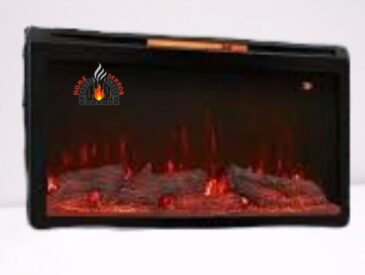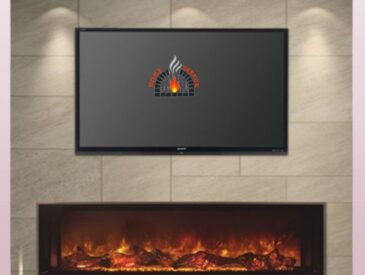Decoding the Significance of Pilot Lights: The concept of a “pilot light” often arises when delving into the world of fireplaces. It’s a crucial component in traditional fireplaces, acting as the ignition source for a cozy blaze.

However, do electric fireplaces share the same reliance on a pilot light?
This article meticulously dissects the role of pilot lights, emphasizing their absence in electric fireplaces and shedding light on the distinctive mechanisms that power these contemporary heating solutions.
1: Understanding the Purpose of Pilot Lights: Before diving into the specifics, let’s establish a fundamental understanding of what a pilot light signifies within the realm of fireplaces. It serves as the catalyst, igniting the flames that warm our homes.
2: Electric Fireplaces: Pilot Light Exemption: In the case of electric fireplaces, the absence of a live flame renders the need for a pilot light obsolete. Unlike their gas counterparts, electric fireplaces rely on an entirely different energy source, eliminating the necessity for a pilot light.

3: Deciphering the Mechanism of Pilot Lights: To grasp the intricacies of pilot lights, it’s imperative to comprehend how they function in gas fireplaces. These small, typically blue flames serve as a continuous ignition source, ready to kindle a larger fire when activated.
4: Unveiling the Inner Workings of Pilot Lights: A pilot light sustains a modest gas flame within a narrow tube, ensuring that the thermocouple remains warm.
The thermocouple, a vital component, generates energy based on temperature differentials, thereby facilitating the operation of the gas fireplace.
5: The Unique Heat Generation of Electric Fireplaces: Electric fireplaces derive their power from a wall outlet or the home’s wiring system, employing either hot coils or radiant heat technology to create warmth within a room.
- The Coil Method: Metal coils or ribbons heat up and warm the surrounding air, which is then circulated into the room.
- Radiant Heat: Infrared light emitted from the unit warms objects and surfaces.

Pilot Lights in Gas Fireplaces: A Necessity
Exclusively found in gas fireplaces, a pilot light acts as the ignition source. This characteristic offers the convenience of an instantly warm flame without the effort of managing a wood-burning fire.
7: Advancements in Ignition Systems: The development of electronic ignition systems presents an efficient solution to the continuous burning of pilot lights. These systems activate the pilot light only when the fireplace is in use, effectively conserving gas.
8: Locating and Troubleshooting Pilot Lights: For those with gas fireplaces, identifying the pilot light’s location is crucial.
Related: gas fireplace troubleshooting guide

Typically situated beneath faux logs, the pilot light emits a small blue flame that engulfs a component known as the thermocouple. Troubleshooting common pilot light issues ensures safe and effective fireplace operation.
9: Electronic Ignition Systems: A New Era: Electronic ignition systems revolutionize the fireplace experience, employing a circuit board to precisely control gas flow and ignition. The result is a swift and efficient fire-starting process.
Conclusion: Embracing Modern Fireplace Technology: In conclusion, the absence of a pilot light in electric fireplaces exemplifies the progress made in heating technology. Understanding the distinct functionalities of each type empowers homeowners to make informed choices, ensuring the perfect fireplace for their living spaces.

pilotEnjoy the warmth and ambiance of your chosen fireplace with confidence, knowing that safety and efficiency are at the forefront of modern fireplace design.





